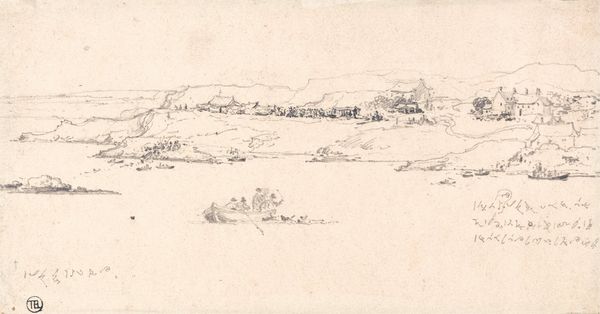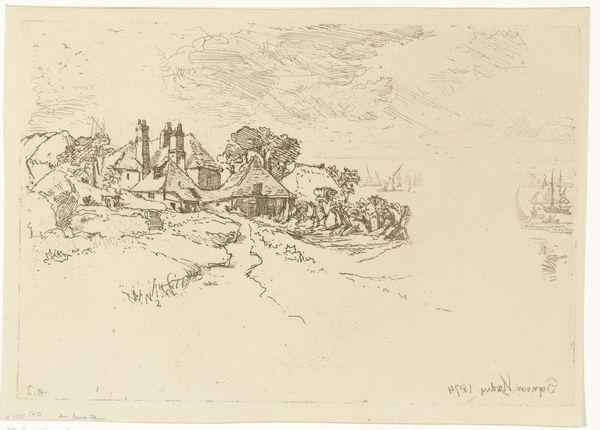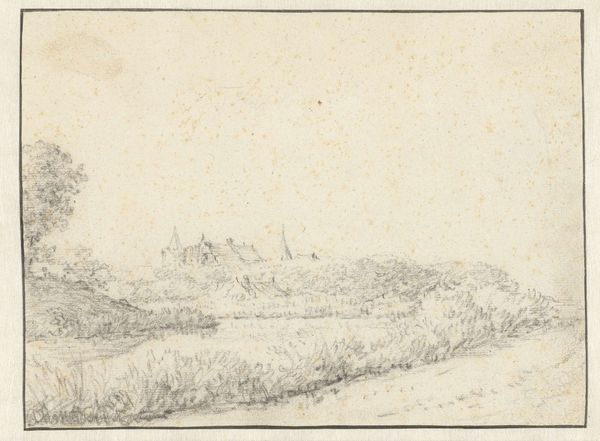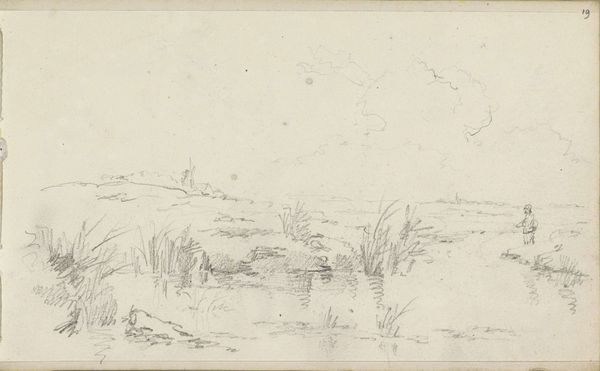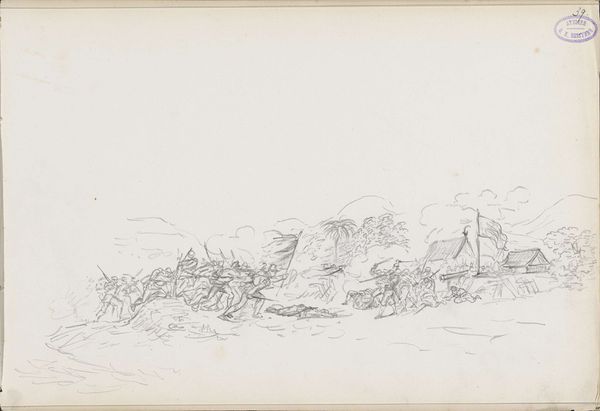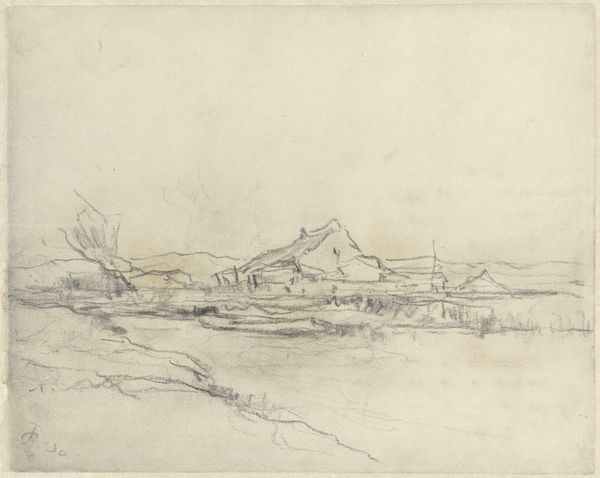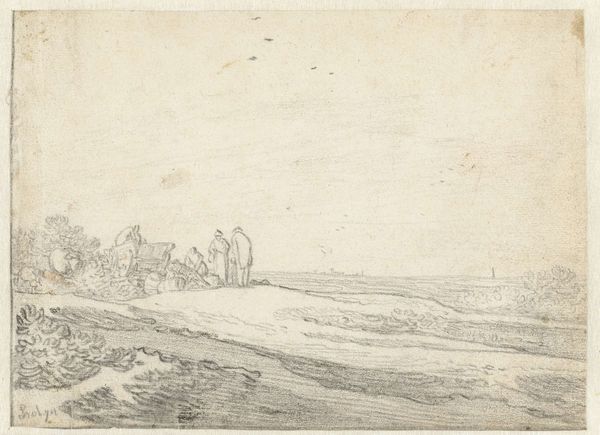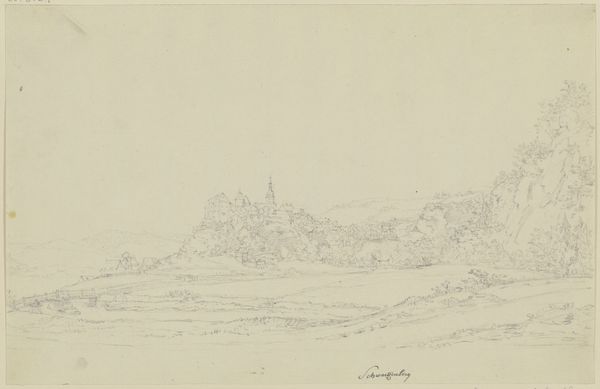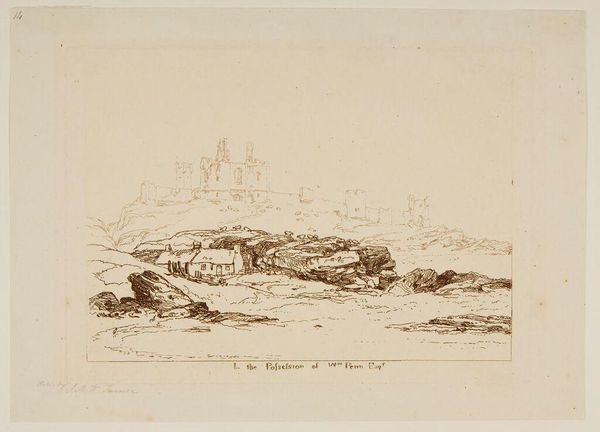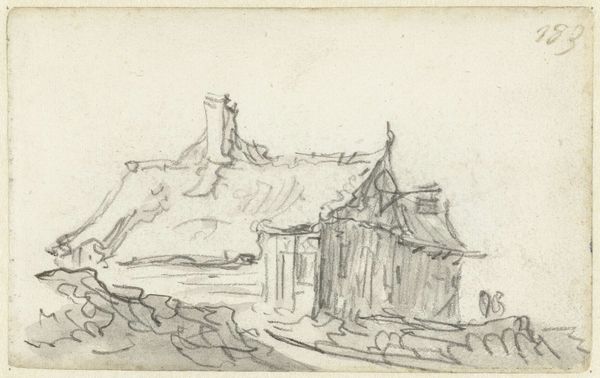
drawing, pencil
#
drawing
#
pen sketch
#
landscape
#
pencil
#
realism
Copyright: Rijks Museum: Open Domain
Curator: Here we have Willem Cornelis Rip's pencil and ink drawing, "Gezicht op Lienden," created sometime between 1866 and 1922. It captures a vista of the Dutch countryside. Editor: It feels ephemeral, doesn't it? Like a memory sketched in the blink of an eye. Sort of wispy and dreamlike. You almost feel like you could breathe this scene away. Curator: That delicate quality probably stems from the medium: a quick study, using pencil and ink, emphasizing line over detail. Note how the windmill and church tower anchor the composition. They function as more than just objects; they're like visual totems of the Dutch landscape. Windmills often symbolize progress, but also the endless, sometimes futile, battle against the elements, which connects back to archetypal water symbolism, a collective history and memory held in this image. Editor: That makes me think about windmills less as machines and more as, I don't know, almost...living creatures rooted in that space. There is a rhythm to them, right? Like the earth is breathing through them. Even though it is a simple drawing. There’s something meditative about the simplicity, and Rip’s mark-making pulls me in closer. It feels authentic. Curator: The sparseness is strategic. He is stripping the landscape down to its fundamental essence, almost echoing traditional folk art where simplifying forms amplifies their symbolic meaning. Consider the horizontal layout – it accentuates the flatness of the land, turning the scene into a kind of map of the Dutch soul, with its waterways, humble architecture, and quiet determination. Editor: The subdued grey tones add to the impression. There are few, but deep shadows and light here suggest a passing storm. There's no sugarcoating, but still hope somewhere on the horizon in Rip’s direct expression of how he sees the scene. The immediacy is the treasure. Curator: It is this commitment to directness, which perhaps resonates the strongest. Rip's landscape isn’t idealized. He doesn’t add frills. His focus, perhaps, transcends time, reminding us that our environment isn't merely something external, but intrinsically connected with the continuity of culture. Editor: Yes. Well, looking at "Gezicht op Lienden," I am grateful Rip was looking when he was, because I can now feel it, too.
Comments
No comments
Be the first to comment and join the conversation on the ultimate creative platform.
